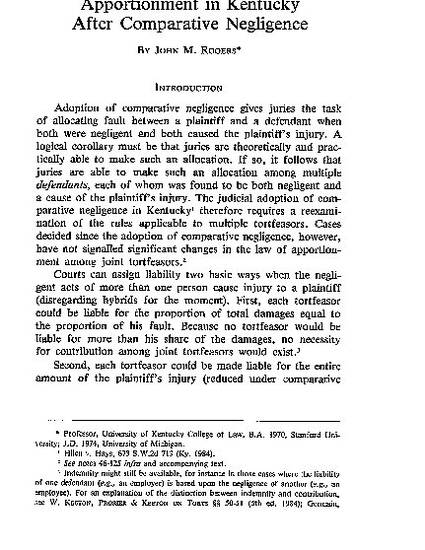
Adoption of comparative negligence gives juries the task of allocating fault between a plaintiff and a defendant when both were negligent and both caused the plaintiff's injury. A logical corollary must be that juries are theoretically and practically able to make such an allocation. If so, it follows that juries are able to make such an allocation among multiple defendants, each of whom was found to be both negligent and a cause of the plaintiff's injury. The judicial adoption of comparative negligence in Kentucky therefore requires a reexamination of the rules applicable to multiple tortfeasors. Cases decided since the adoption of comparative negligence, however, have not signalled significant changes in the law of apportionment among joint tortfeasors.
Courts can assign liability two basic ways when the negligent acts of more than one person cause injury to a plaintiff (disregarding hybrids for the moment). First, each tortfeasor could be liable for the proportion of total damages equal to the proportion of his fault. Because no tortfeasor would be liable for more than his share of the damages, no necessity for contribution among joint tortfeasors would exist.
Second, each tortfeasor could be made liable for the entire amount of the plaintiff's injury (reduced under comparative negligence principles only by the proportion corresponding to the plaintiff's negligence, if any). This is clearly the majority rule. Because a plaintiff may recover all of his damages from one of multiple tortfeasors, fairness dictates that such a defendant be able to recover from other tortfeasors at least a portion of what he must pay the plaintiff. Contribution among joint tortfeasors is therefore allowed. Contribution is either determined on a pro rata basis (i.e., equal shares for each negligent party) of proportioned according to relative fault.
- Litigation and
- Torts

Kentucky Law Journal, Vol. 75, No. 1 (1986-1987), pp. 103-128